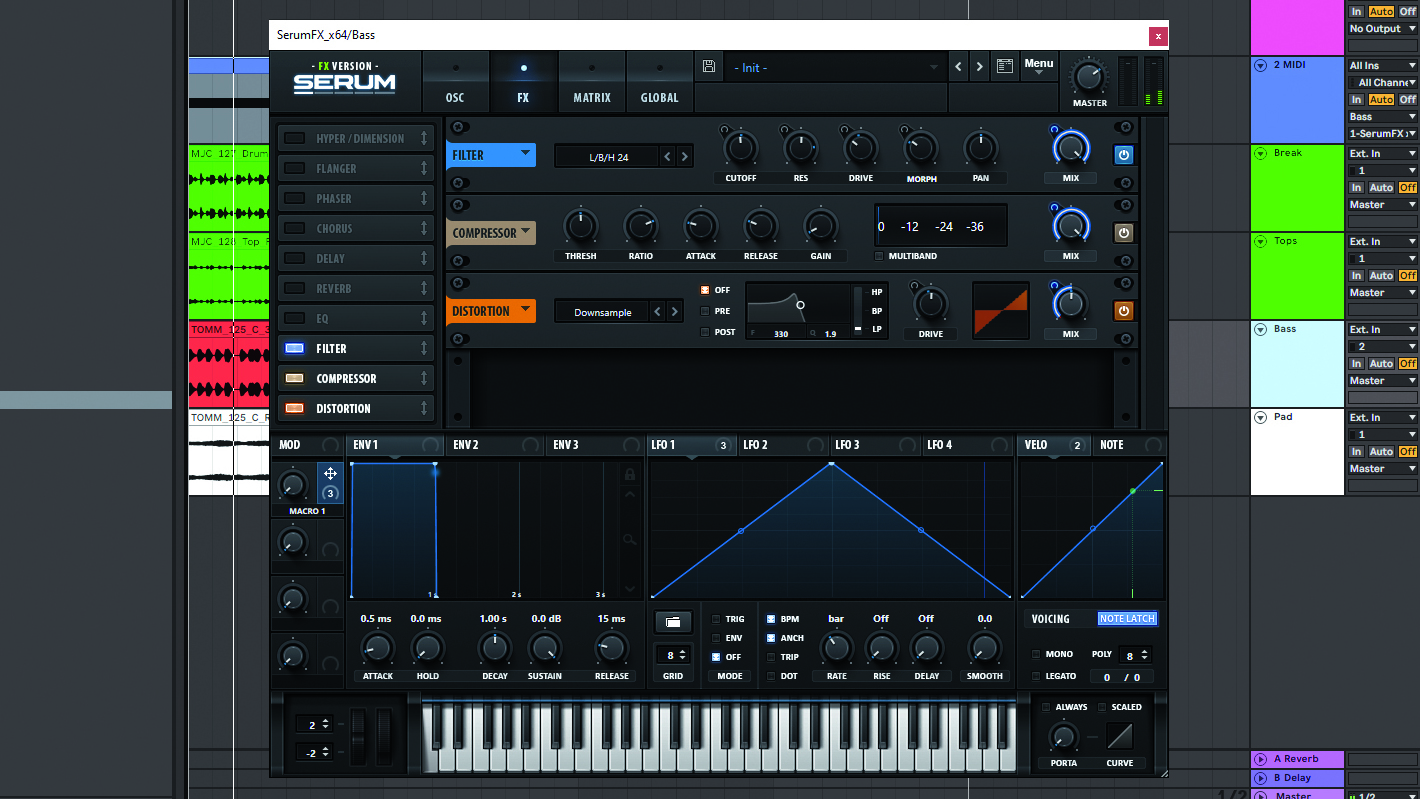A quick guide to Xfer Records Serum's effects
Let’s take a closer look at the ten awesome effects stuffed into Serum’s rack

Hyper/Dimension
The Hyper/Dimension effect is best seen as two awesome effects rolled into one. The Hyper part of the package lets you add lashings of unison detune to your audio, which is ideal for thickening and widening synthetic basslines and leads. Meanwhile, the Dimension section – admittedly inspired by NI Massive’s Dimension Expander – provides more transparent, controllable pseudo-stereo width.
Distortion
Serum’s Distortion unit is a powerful beast in the right hands, with 14 different styles of distortion onboard, ranging from characterful tube saturation all the way through to harsh sine shaping. There’s a switchable high/low/band-pass Filter that can be placed pre- or post-distortion, with separate Drive and wet/dry Mix controls that can be modulated.
Flanger
Though appearing relatively basic, Serum’s Flanger can be extensively tuned to your own taste. The LFO-driven flanging Rate can either be set manually or synced to the BPM of your song, while the Depth control lets you alter the amount of LFO modulation. You can increase the effect’s strength using the Feedback control, while the Phase dial lets you adjust phase position.
Phaser
The Phaser offers a rich sound that can be tweaked endlessly. As with the Flanger, you can either set the phasing Rate locked or unclocked to your DAW’s BPM. Again, the Depth control increases the intensity of the phasing, while the Freq dial sets the phaser’s frequency. Feedback lets the effect ring out more, with Phase controlling stereo spread.
Chorus
As with the Flanger and Phaser, Serum FX’s Chorus features an adjustable modulation Rate. The Delay 1 and 2 dials let you change the timing of the left and right chorus signals, and Depth heightens the strength of the effect. The Feedback dial lets you boost the effect’s resonance, and the handy LP filter is used to cull the wet signal’s high frequencies.
Delay
Serum’s Delay unit is a nifty tool for dialling in a wide variety of delay and echo effects. You can link the Left and Right delay times, or adjust them independently. One of three delay modes are on offer: Normal, Ping Pong or Tap+Delay. The Feedback dial increases the delay repetitions, while the onboard EQ allows you to sculpt the tone of the wet delay signal.
Compressor
This works in a similar way to most compressor units. Threshold sets the volume level at which the compressor starts operating, with Ratio dictating the strength of gain reduction. Attack and Release govern the onset and release of gain reduction, and the Multiband button switches in combined upwards and downwards compression across three bands.
Get the MusicRadar Newsletter
Want all the hottest music and gear news, reviews, deals, features and more, direct to your inbox? Sign up here.
Reverb
The onboard Reverb offers either Plate or Hall algorithms. You can alter the reverb Room Size, and tweak the amount of Pre-Delay to offset the time before the reverberation signal occurs. Low- and High-Cut controls let you curb the reverb’s low and high frequencies, and Damping allows adjustment of high frequency attenuation. You can also control the reverb signal’s stereo spread using the Width control.
EQ
Boasting only two bands, Serum’s compact but useful parametric EQ allows you to switch both the low and high bands between Shelf, Peak or Filter, giving you a surprising number of options for shaping the tone of your input signal. As with most other EQs, you can set the Frequency, Q (ie, resonance) and Gain of each band. Try using the high- and low-pass filter in tandem to create a band-pass filter. This tone-shaper is especially useful once parameters are modulated with one of Serum’s envelopes and LFOs.
Filter
Functionally identical to the main filter found on Serum’s main Oscillator panel, the effect version of the Filter offers over 50 filter types ranging from simple high- and low-pass offerings through to exotic types such as multimode band-pass flavours, flanging and even reverb. You can adjust the Cutoff frequency, Resonance and Pan position, and dial in extra grunt with the Drive knob.
Computer Music magazine is the world’s best selling publication dedicated solely to making great music with your Mac or PC computer. Each issue it brings its lucky readers the best in cutting-edge tutorials, need-to-know, expert software reviews and even all the tools you actually need to make great music today, courtesy of our legendary CM Plugin Suite.










